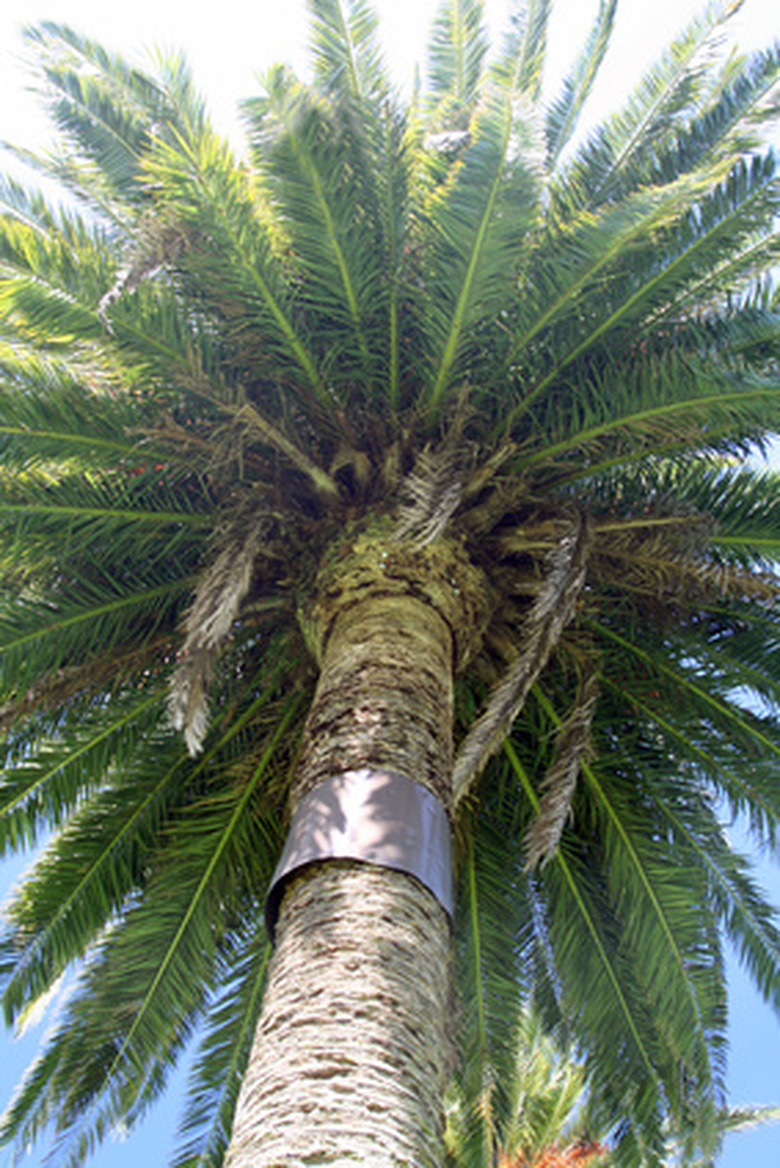Toxic Palm Trees In Florida
With most palm trees, the biggest problems are razor-sharp leaves and equally sharp thorns. There are a few, however, that are toxic and can cause serious medical problems and even death if ingested. Do not plant toxic palm trees where young children and pets can get access to them. Pick up and dispose of any leaves, fruit or stems that fall to the ground. Being extra cautious is better than not being cautious enough.
Formosa Palm
Formosa palm (Arenga engleri) is also called Taiwan sugar palm, dwarf sugar palm and Taiwan arenga palm. The fruit is toxic and can cause a severe allergic skin reaction. The tree grows to 10 feet tall with a spread of 16 feet and produces dark olive, fishtail-shaped leaves that grow up to 8 feet long. The red, orange or green flowers grow on stalks and are both male and female. The female flowers produce red or deep purple fruits less than 1 inch in diameter. Plant the Formosa palm in partial shade and in rich, moist, well-drained soil. The plant does not do well in a salty environment. The Formosa palm can be grown in all but a small section of northern Florida.
- With most palm trees, the biggest problems are razor-sharp leaves and equally sharp thorns.
- The Formosa palm can be grown in all but a small section of northern Florida.
Fishtail Palm
The fruit of the fishtail palm (Caryota mitis) contains oxalic acid which is toxic when ingested and can cause severe chemical burns when it comes in contact with the skin. The tree grows up to 25 feet tall and 12 feet wide and produces stems that are topped with light green leaves that grow up to 9 feet long and red fruits. Plant the fishtail palm in full sun, partial shade or full shade and in moist, well drained soil. The tree is hardy in southern Florida.
Queen Sago
Queen sago (Cycas circinalis) is also known as false sago and fern palm. The tree contains neurotoxins that can paralyze or kill if ingested. The plant grows up to 20 feet tall and produces feather-like leaves that grow up to 8 feet long. The tree will be either male or female, and one of each is needed to produce fruit. Each tree produces cones in the fall, and the female cones produce large orange seeds. Plant the queen sago in full sun and in a loose, sandy, well-drained soil. The queen sago is only hardy in southern Florida and the Florida Keys.
- The fruit of the fishtail palm (Caryota mitis) contains oxalic acid which is toxic when ingested and can cause severe chemical burns when it comes in contact with the skin.
